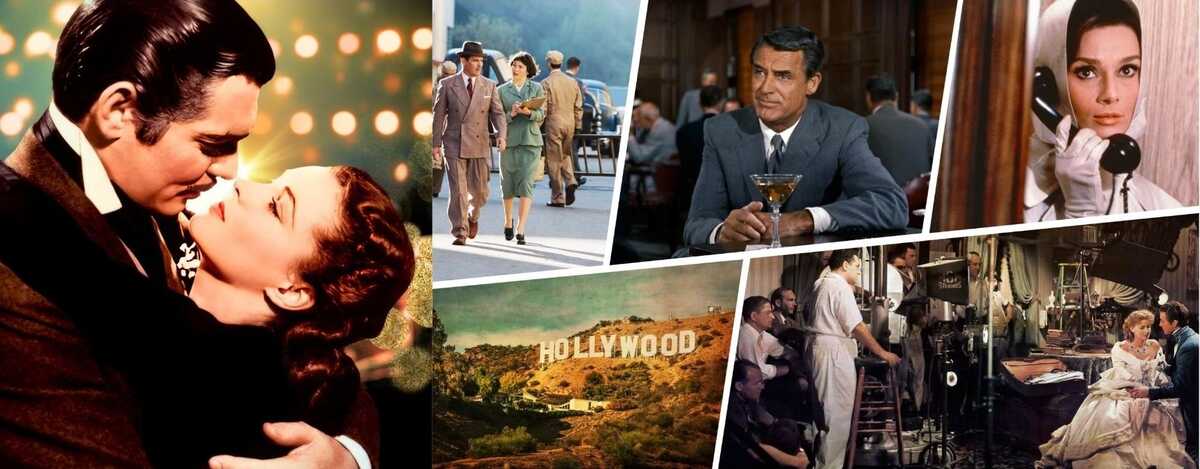The Hollywood Golden Age, often seen as the pinnacle of early American cinema, is remembered for its unmatched glamour, groundbreaking innovations, and influence on global culture. This era revolutionized how movies were made and left an indelible mark on the world of entertainment, establishing standards in storytelling and film production that are still admired today. Iconic stars, legendary films, and significant technological advancements made the Golden Age of Hollywood a defining period in film history.
When Did the Hollywood Golden Age Start and End?
The Hollywood Golden Age began in the late 1910s, with the release of D.W. Griffith’s The Birth of a Nation in 1915, often cited as a critical starting point. This era spanned several phases, including the Silent Era and Pre-Code Hollywood, and peaked from the mid-1930s to the early 1960s. The Golden Age officially ended in the early 1960s due to factors like the rise of television, blacklisting during the McCarthy era, escalating production costs, and anti-trust legislation, which reshaped the film industry and led to the emergence of “New Hollywood.”
Hollywood Golden Age (Start to End)
| Period | Years | Key Events/Highlights |
|---|---|---|
| Early Beginnings | Late 1910s | – Birth of the Hollywood studio system – Release of The Birth of a Nation (1915), a technical milestone |
| Silent Era | 1915 – 1929 | – Growth of silent films – Iconic films: The Ten Commandments (1923), City Lights (1931) |
| Pre-Code Hollywood | 1929 – 1934 | – Transition to sound with The Jazz Singer (1927) – Looser film censorship – Films like Frankenstein |
| Golden Peak | Mid-1930s – Early 1960s | – Dominance of the “Big Five” studios – Technicolor and sound revolution – Iconic films: Gone with the Wind, Casablanca |
| Technological Advancements | 1930s – 1950s | – Introduction of sound and color – Key films: The Wizard of Oz, Citizen Kane |
| Decline and Transition | Early 1960s | – Rise of television – Anti-trust legislation – End of the studio system’s monopoly – Emergence of “New Hollywood” |
What Defined the Golden Age of Hollywood?
The Hollywood Golden Age was marked by the dominance of five significant studios: MGM, Paramount, Fox, Warner Bros., and RKO. These studios controlled all aspects of film production, from casting to distribution, creating a vertically integrated industry that monopolized the market. The era also saw the rise of stars like Humphrey Bogart, Cary Grant, Grace Kelly, and Rita Hayworth, who became household names and guaranteed box office success.
The Silent Era and Pre-Code Hollywood
Within the Hollywood Golden Age, the Silent Era (1915-1929) and the Pre-Code Era (1929-1934) were crucial phases that helped shape the industry’s future. Films like The Ten Commandments, City Lights, The Public Enemy, and Frankenstein laid the groundwork for what many consider the actual golden age of Hollywood, from the mid-1930s to the early 1960s.
Sound and Color
The transition to sound with films like The Jazz Singer in 1927 and the introduction of Technicolor revolutionized cinema. Movies like Gone with the Wind, The Wizard of Oz, & Snow White, and the Seven Dwarfs captivated audiences with their innovative use of sound and color. At the same time, black-and-white films like Citizen Kane and Casablanca proved that artistic brilliance could transcend technological limitations.
Rising Stars of the Hollywood Golden Age
The Golden Age of Hollywood introduced us to numerous iconic actors and actresses who captivated audiences and became synonymous with the era’s success. Here are some of the most notable stars:
- Humphrey Bogart: Known for his rugged charm, Bogart became a leading man in classics like Casablanca and The Maltese Falcon.
- Cary Grant: Grant epitomized the suave leading man. He starred in romantic comedies like Bringing Up Baby and thrillers like North by Northwest.
- James Stewart: Stewart’s everyman appeal and distinctive voice made him a beloved film star, such as Mr. Smith’s visits to Washington and his discovery that life is truly remarkable.
- Grace Kelly: Kelly’s elegance and poise shone in her collaborations with Alfred Hitchcock, including Rear Window and To Catch a Thief.
- Ingrid Bergman: Bergman brought depth and grace to her roles, particularly in films like Casablanca and Notorious.
- Audrey Hepburn: Hepburn’s charm and sophistication made her an instant star in films like Roman Holiday and Breakfast at Tiffany’s.
- Marilyn Monroe: Monroe became the quintessential blonde bombshell, starring in hits like Some Like It Hot and Gentlemen Prefer Blondes.
- Clark Gable: Acclaimed as “The Hollywood King, ” Gable’s rugged good looks & commanding presence made him a star in films like Gone with the Wind and It Happened One Night.
- Elizabeth Taylor: Taylor’s striking beauty and talent were evident from a young age, earning her acclaim in films like A Place in the Sun and Cleopatra.
These stars, and many others, defined the Hollywood Golden Age and left a lasting legacy that continues to influence modern cinema.
The Decline of the Hollywood Golden Age
Several factors contributed to the decline of the Hollywood Golden Age:
- Television’s Rise: As television became more popular, it provided a new form of entertainment that competed with cinema.
- Blacklist and McCarthyism: The blacklisting of prominent screenwriters and actors during the McCarthy era disrupted the industry.
- Rising Production Costs: The financial burden of producing high-quality films grew significantly.
- Anti-Trust Legislation: The 1948 Supreme Court ruling against the “Big 5” studios’ vertical integration forced them to divest their theater chains, ending their monopolistic control.
The End and New Beginnings
By the 1960s, the influence of the Hollywood Golden Age had diminished. The industry’s transformation was marked by the rise of “New Hollywood,” led by visionary filmmakers like Steven Spielberg, George Lucas, and Francis Ford Coppola. These directors introduced fresh ideas and storytelling techniques, birthing the blockbuster era and revitalizing American cinema.









